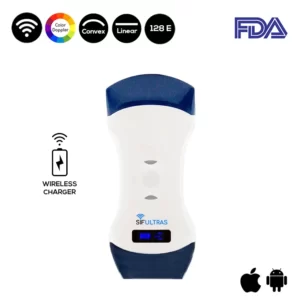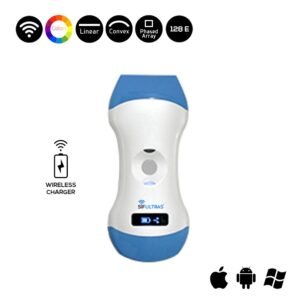Venous Ultrasound: VU
Ultrasonography (US) is the most useful and widely used modality for evaluating venous diseases. Venous Ultrasound is a procedure used to produce images of the veins in the body. It is commonly used to search for blood clots, especially in the veins of the leg – a condition often referred to as deep vein thrombosis.
This exam can be done on both legs or arms or a single leg or arm depending on the area of concern.
A venous ultrasound study is also performed to determine the cause of long-standing leg swelling. In people with a common condition called “varicose veins”, the valves that normally keep blood flowing back to the heart may be damaged, and venous ultrasound can help identify the damaged valves and abnormal blood flow.
In addition it aids in guiding placement of a needle or catheter into a vein. Sonography can help locate the exact site of the vein and avoid complications, such as bleeding or damage to a nearby nerve or artery. VU also helps map out the veins in the leg or arm so that pieces of vein may be removed and used to bypass a narrowed or blocked blood vessel.
An example is using portions of vein from the leg to surgically bypass narrowed heart (coronary) arteries. Further, VU is used to examine a blood vessel graft used for dialysis if it is not working as expected; for example, the graft may be narrowed or blocked.
In children, venous ultrasound is used to evaluate a connection between an artery and a vein which can be seen in congenital vascular malformations (arteriovenous malformations or fistula) and in dialysis fistula.
Here we may consider Doppler ultrasound as a special ultrasound technique that evaluates movement of materials in the body. It allows the doctor to see and evaluate blood flow through arteries and veins in the body
Which Doppler ultrasound scanner do doctors use for venous imaging?
Since 5.0 MHz is the frequency needed for vascular and 10 MHz is the ideal frequency for superficial veins (venous ultrasound) examination, the SIFULTRAS-5.42 is the best option for detecting clots and aid in guiding placement of a needle or catheter into a vein but also map out the veins in the arm or leg.
A Doppler ultrasound can help determine the blood pressure within your arteries. It can also show how much blood is currently flowing through your arteries and veins.
Besides, the Venous Doppler Exam can help the Doctor see the reduced or absent blood flow to various organs or if it’s an increased blood flow, which is a sign of an infection.
Doppler ultrasound images can help the physician to see and evaluate not only blockages to blood flow (such as clots), narrowing of vessels, tumors and congenital vascular malformations, increased blood flow, which may be a sign of infection but also reduced or absent blood flow to various organs, such as the testes or ovary.
The benefits of this procedure is that it is safe and painless. It gives a clear picture of soft tissues and inner-organs without the danger of radiation.
Compared to Venography, which requires injecting contrast material into a vein to give it a contrast color on the monitor.
Venous Doppler Exam does not require any needle injection or intervention, only the presence of a trained medical examiner and a High Resolution Ultrasound Scanner.
References: Venous Ultrasonography, veins: anatomy and basic approach
Venous ultrasound is performed by a radiologist, cardiologist, emergency doctor, …

[launchpad_feedback]
Although the information we provide is used by different doctors and medical staff to perform their procedures and clinical applications, the information contained in this article is for consideration only. SIFSOF is not responsible neither for the misuse of the device nor for the wrong or random generalizability of the device in all clinical applications or procedures mentioned in our articles. Users must have the proper training and skills to perform the procedure with each ultrasound scanner device.
The products mentioned in this article are only for sale to medical staff (doctors, nurses, certified practitioners, etc.) or to private users assisted by or under the supervision of a medical professional.



